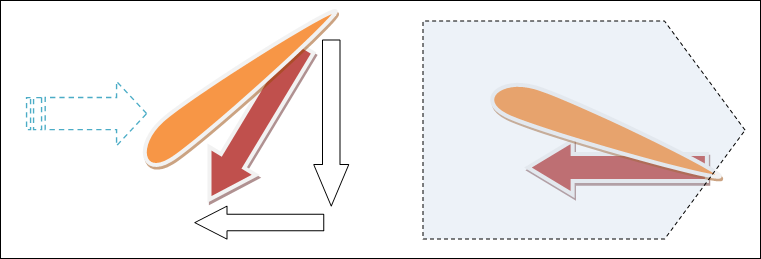This may be a stupid or simple question, although any help is appreciated! :)
If possible, please answer without mathematical terminology. So I understand the concept of the blade increasing air momentum at the front, thus creating lower pressure, and I also get that the blade acts as an airfoil, lower pressure at the top, and higher at the bottom thus pulling it forward, and producing thrust.
My main issue is that I can't visualize how the relative wind physically travels behind the camber side, and hit the back side of the airfoil like in the diagram? Wouldn't it hit directly on the camber side if it's moving forward, not travel below, and strike it from the back? If someone can explain, that would be amazing!



